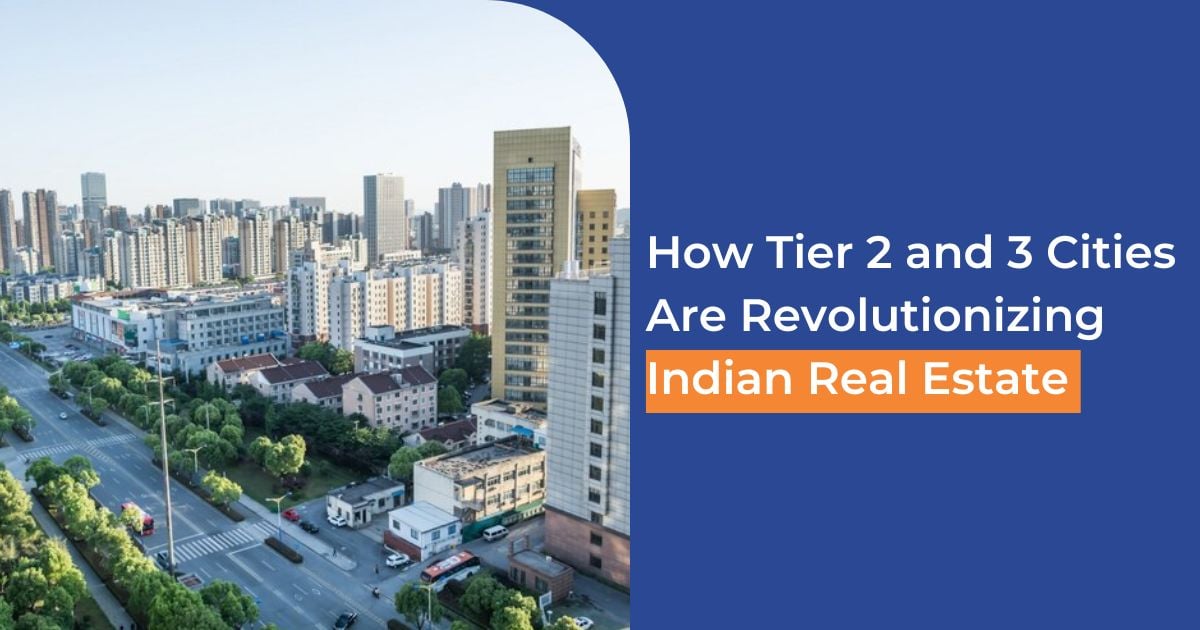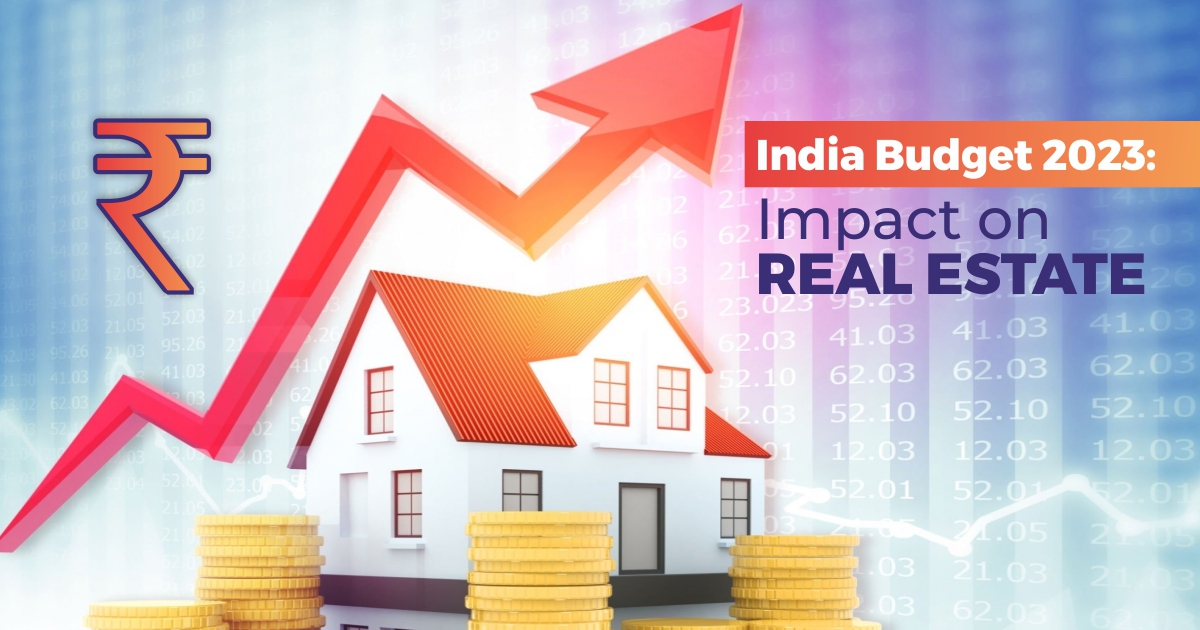The Indian real estate landscape is undergoing a remarkable transformation, with Tier 2 and 3 cities emerging as the new hotspots for growth and investment. Traditionally, the focus of real estate development in India has been on the major metropolises of the nation.
Tier 2 and Tier 3 cities are gaining favor with real estate investors thanks to their blend of cost-effective property prices and upgraded infrastructure. These urban areas present an appealing trajectory for growth, rendering them highly alluring as investment hubs. The affordability factor plays a pivotal role in steering investors toward Tier 2 and Tier 3 cities, as property costs in major metropolises frequently present a formidable hurdle, making these smaller cities with reasonable pricing even more enticing. However, the rapid urbanization and infrastructure development in smaller cities are now drawing attention from investors and developers alike.

What do tier 2 and tier 3 cities refer to?
In India, the terms "Tier 2" and "Tier 3" cities are often used to categorize urban areas based on their population, economic development, infrastructure, and other factors. These city tiers help classify and understand the varying degrees of development and growth across the country. Here's a brief explanation of what Tier 2 and Tier 3 cities refer to in India.
The government designates cities with populations ranging from 50,000 to 100,000 as tier 2 cities, for example, Indore, Nagpur, Lucknow, Amritsar, Ahmedabad, etc.
Those with populations between 20,000 and 50,000 as tier 3 cities, for example, Nashik, Rajkot, Baroda, Meerut, Ludhiana, etc.
In this blog, we will explore the rise of Tier 2 and 3 cities in India and how they are revolutionizing the real estate market.
1. Urbanization and Infrastructure Development
The urbanization trend in India is one of the key factors driving the growth of Tier 2 and 3 cities. As rural populations migrate to urban areas in search of better opportunities and improved living conditions, these cities are experiencing substantial population growth. To accommodate this influx, there has been a significant push for infrastructure development, including roads, airports, and public transportation systems.
This increased focus on infrastructure not only makes these cities more accessible but also enhances their appeal to investors. Better connectivity and amenities are crucial factors that make real estate in Tier 2 and Tier 3 cities a promising investment opportunity.
2. Affordability and Quality of Life
One of the most significant advantages that Tier 2 and Tier 3 cities offer is affordability. As compared to their Tier 1 counterparts, the cost of living and real estate prices in smaller cities are considerably lower. This affordability factor is attracting not only individuals looking for their dream homes but also businesses seeking to set up operations.
Additionally, the quality of life in many Tier 2 and Tier 3 cities is often better than in overcrowded metros. Reduced pollution, less traffic congestion, and a relatively peaceful environment are compelling reasons for people to consider relocating to these cities. As a result, real estate developers are keen on capitalizing on the demand for residential projects that provide a higher quality of life at an affordable price.
3. Economic Growth and Employment Opportunities
Tier 2 and 3 cities are witnessing impressive economic growth due to the presence of various industries, including manufacturing, IT, and services. With favorable government policies and incentives for businesses to expand in these regions, there has been a notable increase in employment opportunities. This has a direct impact on the real estate market as a growing working population seeks suitable housing options.
Many companies are establishing their operations in these cities, which not only drives commercial real estate demand but also influences the residential sector. The growing demand for office spaces and affordable housing makes these cities a lucrative investment destination for both real estate developers and investors.
4. Government Initiatives and Smart City Projects
The Indian government's "Smart Cities Mission" is a significant catalyst for the growth of Tier 2 and 3 cities. Under this mission, several smaller cities have received funding and support to develop their infrastructure and services. The aim is to create sustainable and technologically advanced urban areas that offer a high quality of life.
These smart city projects are turning Tier 2 and 3 cities into modern and efficient urban centers. They are becoming increasingly attractive to both domestic and foreign investors, who see the potential for long-term returns in these emerging markets. This government backing is instrumental in accelerating the growth of these cities and, in turn, their real estate sectors.
5. Diverse Investment Options
The real estate market in Tier 2 and 3 cities is not limited to residential properties. There are diverse investment options available, including commercial spaces, retail properties, and industrial developments. This variety allows investors to diversify their portfolios and tap into different segments of the market.
Investors can choose from shopping malls, office complexes, warehouses, and logistics centers, which cater to the growing demands of businesses and consumers in these cities. This diversity of investment options makes Tier 2 and Tier 3 cities even more appealing for those looking to enter the Indian real estate market.
6. Potential for High Returns
While Tier 2 and 3 cities offer affordability and growth potential, they also present the opportunity for high returns on investment. Real estate prices in these cities are often at an early stage of appreciation, which means that investors can benefit from capital appreciation over time. Furthermore, rental yields in these cities are often higher than in Tier 1 cities, offering steady income for property owners.
Investors who enter these markets at the right time and with the right properties can potentially enjoy substantial returns on their investments as the cities continue to develop and grow.

Conclusion
The real estate landscape in India is evolving, and the spotlight is shifting from the Tier 1 metropolises to the Tier 2 and 3 cities. The factors contributing to the growth of these cities - urbanization, infrastructure development, affordability, quality of life, economic opportunities, government initiatives, and diverse investment options - collectively indicate the immense potential for investors and developers.
As these cities continue to expand and modernize, they are revolutionizing the Indian real estate market, offering not only financial benefits but also the promise of a higher quality of life for those who choose to live and work there. Tier 2 and 3 cities are no longer the hidden gems of the real estate sector but rather the future stars of India's urban landscape. As such, they are worth keeping a close eye on for anyone looking to invest in the Indian real estate market.




